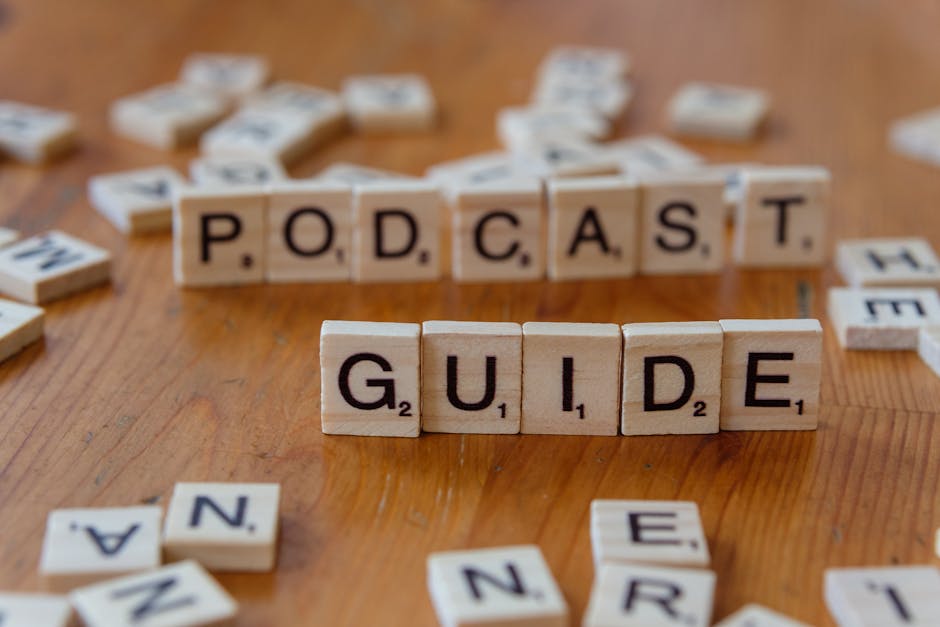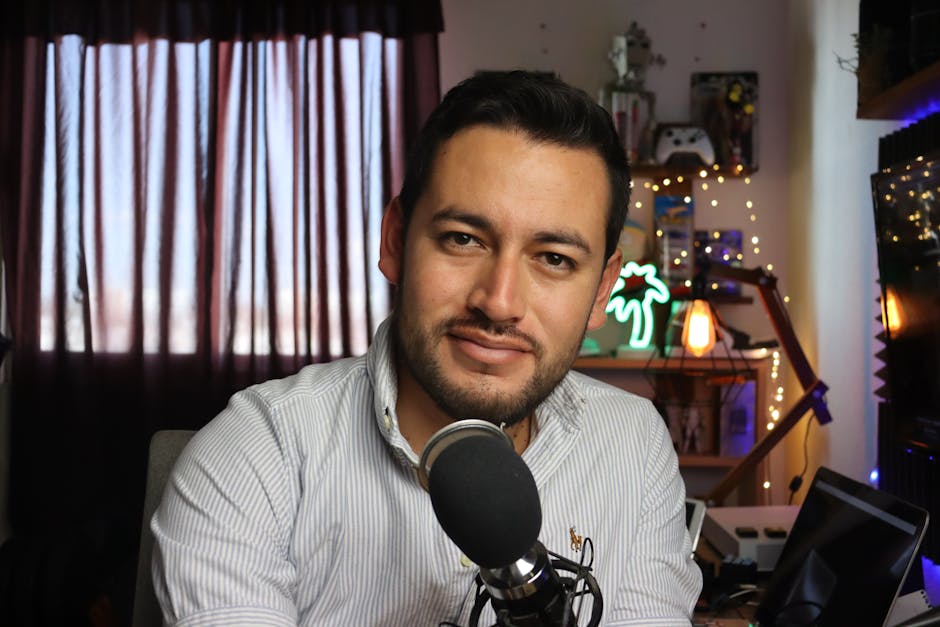My Ultimate Guide to Growing Your Podcast Audience From Scratch.
My Ultimate Guide to Growing Your Podcast Audience From Scratch
Starting a podcast can feel like shouting into a void. You’ve poured your heart into creating compelling content, perfecting your audio, and hitting that publish button, only to be met with a handful of downloads – mostly from your mom and a few supportive friends. Sound familiar? You’re not alone. Every single successful podcaster started exactly where you are: with zero listeners and a dream.
But here’s the secret: growing a podcast audience from scratch isn’t about luck; it’s about strategic effort, genuine connection, and a deep understanding of what makes people hit ‘subscribe.’ This isn’t a guide filled with generic tips; this is your battle plan, forged from experience, designed to help you build a loyal, engaged listenership from the ground up. Let’s transform that empty download chart into a vibrant community.
Laying the Unshakeable Foundation: Before You Even Hit Record
Before you even think about promotion, you need a rock-solid product. Imagine trying to sell a house with no foundation – it won’t stand for long. Your podcast is no different. Growth from scratch begins with intelligent planning.
Defining Your Sonic Niche: The Specificity That Attracts
The biggest mistake new podcasters make is trying to appeal to everyone. When you try to be everything to everyone, you end up being nothing to no one. Your “from scratch” advantage is the ability to be incredibly specific. Who exactly are you trying to reach? What unique problem do you solve, or what specific passion do you ignite?
- Go Micro: Instead of “True Crime,” try “True Crime Stories from Abandoned Appalachian Towns.” Instead of “Business Tips,” try “Startup Strategies for Solopreneurs in the Sustainable Fashion Industry.” The narrower your niche, the easier it is for your ideal listener to find you and feel like you’re speaking directly to them.
- Research Your Audience: Where do they hang out online? What other podcasts, books, or blogs do they consume? Understanding this will inform your content and where you promote it.
- Analyze the Competition (or Lack Thereof): Are there other podcasts in your niche? Great! Learn from them. What are they doing well? What are they missing? Can you offer a fresh perspective or deeper dive? If there are none, even better – you’ve found an untapped market!
Crafting Your Ideal Listener Persona: Who Are You Talking To?
Give your ideal listener a name, a job, hobbies, pain points, and aspirations. When you record, imagine this one person sitting across from you. This level of focus makes your content incredibly relatable and authentic, which is a magnet for new listeners. What keeps them up at night? What makes them laugh? What are their deepest desires? Your podcast should be the answer to their unspoken questions or the soundtrack to their daily life.
Your Unique Podcast Promise: Why Should They Listen to YOU?
In a sea of podcasts, what makes yours essential? This isn’t just your topic; it’s your angle, your personality, your format, your unique value. Is it your unparalleled expertise? Your hilarious banter? Your deep, empathetic interviews? Clearly articulate this promise in your podcast’s description and embody it in every episode. This “why” is what converts a casual browser into a dedicated subscriber.

Crafting Your Magnetic Message: Attracting First-Time Listeners
Once your foundation is solid, it’s time to build the structure: your actual episodes. The quality of your content and presentation is paramount when you have no existing audience to fall back on. Every single episode is an audition for a new listener.
The Art of the Engaging Episode: From Hook to Call-to-Action
Every episode needs to be a journey. Think about your episode structure: a captivating hook, clear value delivery, and a compelling close. Don’t ramble. Respect your listener’s time. Focus on delivering clear, actionable, or entertaining content consistently.
- Strong Introductions: Grab attention immediately. State what the episode is about and why it matters to your listener.
- Storytelling is Key: Humans are wired for stories. Integrate anecdotes, examples, and personal experiences to make your points memorable.
- Clear Takeaways: Ensure listeners walk away with something tangible – a new insight, a practical tip, or a fresh perspective.
- Call-to-Action (CTA): Don’t just end. Ask them to subscribe, leave a review, visit your website, or share the episode. Make it easy and clear.
Sound Quality That Keeps Them Listening: Professionalism Matters
You can have the most brilliant content, but if your audio is muddy, inconsistent, or riddled with background noise, people will tune out. When starting from scratch, you don’t have the luxury of a forgiving audience. Invest in a decent microphone (you don’t need a studio, but avoid your phone’s built-in mic), learn basic editing, and record in a quiet space.
- Microphone Matters: A good quality microphone is your most important investment.
- Acoustics: Record in a small room with soft furnishings (couches, curtains, rugs) to reduce echo.
- Editing Basics: Learn to remove pauses, consistent volume, and basic noise reduction. Tools like Audacity or GarageBand are free and powerful.
Show Notes as Your SEO Superpower: Beyond a Simple Summary
Your show notes are often overlooked but are critical for discoverability. Treat them like a blog post. Include a keyword-rich summary, episode highlights, timestamps, links to resources mentioned, and a strong call-to-action. This is how search engines (and podcast apps) understand what your episode is about, helping new listeners find you.
Beyond Your Friends: Spreading the Word to Strangers
This is where many new podcasters falter. They expect listeners to magically appear. Building an audience from scratch requires proactive, consistent promotion. You have to go where your ideal listeners already are and introduce yourself.
Optimizing for Discoverability: Directories and Search Engines
The first step to being found is being everywhere your potential listeners search. Ensure your podcast is submitted to all major directories.
- Major Directories: Apple Podcasts, Spotify, Google Podcasts, Stitcher, Overcast, Podcast Addict, etc. Your podcast host will usually guide you through this.
- Podcast SEO: Use relevant keywords in your podcast title, description, episode titles, and show notes. Think about what your target audience would type into a search bar. For instance, if your podcast is about “sustainable living tips for urban dwellers,” make sure those exact phrases appear naturally.
- Compelling Cover Art: Your cover art is your first impression. Make it professional, legible, and reflective of your brand. It needs to stand out in a crowded directory.
Smart Social Sharing That Converts: Not Just “New Episode Out!”
Simply posting “New episode out!” won’t cut it. You need to provide value and intrigue on social media to draw people in. Think about creating micro-content from your episodes.
- Audiograms: Short audio clips with an animated waveform and captions are highly shareable on Instagram, Twitter, and LinkedIn.
- Quote Cards: Extract powerful quotes from your episodes and turn them into visually appealing graphics.
- Behind-the-Scenes: Share snippets of your recording process, guest interactions, or even bloopers to build connection.
- Engage, Don’t Just Broadcast: Ask questions, run polls, and respond to comments. Use social media to build a community, not just a billboard.




Post Comment